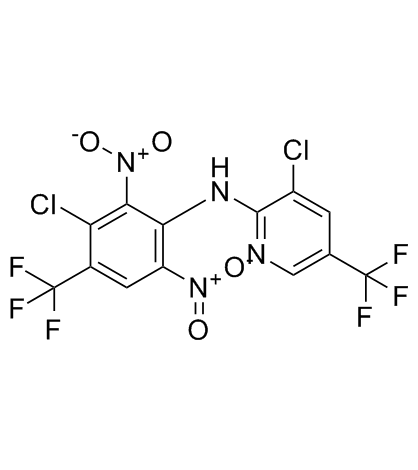The species sensitivity distribution approach compared to a microcosm study: a case study with the fungicide fluazinam.
R P A van Wijngaarden, G H P Arts, J D M Belgers, H Boonstra, I Roessink, A F W Schroer, T C M Brock
Index: Ecotoxicol. Environ. Saf. 73(2) , 109-22, (2010)
Full Text: HTML
Abstract
We assessed the sensitivity of freshwater organisms (invertebrates and algae) to the fungicide Shirlan (active ingredient fluazinam) in single-species laboratory tests and in microcosms. Species sensitivity distribution (SSD) curves were constructed by means of acute toxicity data for 14 invertebrate species, since algae were much less sensitive. The EC(10)-based SSD gave a median HC(5) value of 0.6microgL(-1) and a 90% confidence interval of 0.1-1.9 microgL(-1). The EC(50)-based SSD gave a median HC(5) value of 3.9 microgL(-1) (90% confidence interval: 0.9-9.9 microgL(-1)). The microcosms were treated four times with Shirlan (concentration range: 0.4-250 microgL(-1)). Responses of the microcosm communities were followed. The 2 microgL(-1) treatment was the no-observed-effect concentration (NOEC(microcosm)). The 10 microgL(-1) treatment resulted in short-term effects on a few zooplankton taxa. Clear effects were observed at 50 and 250 microgL(-1). The responses in the microcosms were in line with the toxicity data for the tested lab species. The median EC(10)-based HC(5) and the lower limit EC(50)-based HC(5) were lower, and the median EC(50)-based HC(5) was slightly higher than the NOEC(microcosm). This is consistent with other studies that compared SSDs with responses in model ecosystems that received repeated applications of pesticides.
Related Compounds
| Structure | Name/CAS No. | Molecular Formula | Articles |
|---|---|---|---|
 |
Fluazinam
CAS:79622-59-6 |
C13H4Cl2F6N4O4 |
|
Allergic contact dermatitis from the newly introduced fungic...
1995-03-01 [Contact Dermatitis 32(3) , 160-2, (1995)] |
|
Effects of four fungicides on nine non-target submersed macr...
2009-02-01 [Ecotoxicol. Environ. Saf. 72(2) , 579-84, (2009)] |
|
Gas chromatographic determination of azoxystrobin, fluazinam...
1998-01-01 [J. AOAC Int. 81(6) , 1185-9, (1998)] |
|
Contact dermatitis due to a new fungicide used in the tulip ...
1995-07-01 [Contact Dermatitis 33(1) , 8-11, (1995)] |
|
Occupational asthma from fungicides fluazinam and chlorothal...
2003-01-01 [Occup. Environ. Med. 60(1) , 76-7, (2003)] |